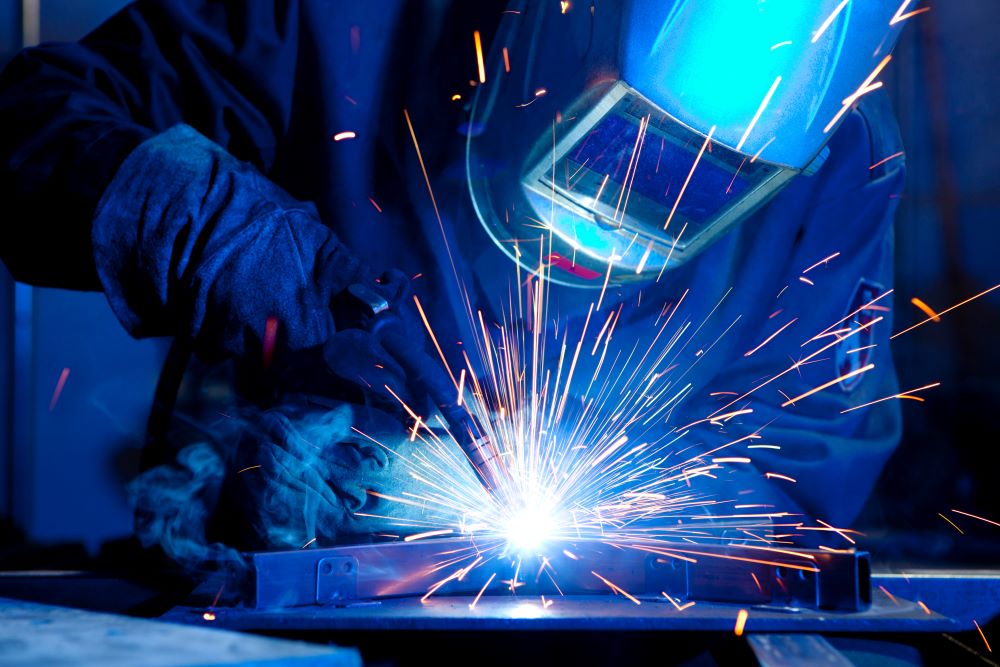Why a Welding WPS is Crucial: Enhancing Consistency and Conformity
Why a Welding WPS is Crucial: Enhancing Consistency and Conformity
Blog Article
Getting Welding Quality: Revealing the Secrets of WPS Application and Optimization
In the world of welding, attaining excellence is a search that hinges on the thorough application and optimization of Welding Procedure Specs (WPS) By delving right into the essential aspects, techniques, difficulties, and ideal practices connected with WPS, a globe of welding excellence waits for those who are ready to discover its depths.
Significance of WPS in Welding
The Significance of Welding Treatment Specs (WPS) in the welding sector can not be overstated, functioning as the backbone for making certain uniformity, quality, and safety and security in welding procedures. A WPS provides thorough directions on exactly how welding is to be carried out, including crucial variables such as products, welding processes, joint layout, filler metals, interpass and preheat temperature levels, welding currents, voltages, traveling rates, and a lot more. By sticking to a distinct WPS, welders can preserve harmony in their work, causing regular weld quality throughout various tasks.

Trick Aspects of WPS
Talking about the integral components of a welding procedure requirements (WPS) is important for recognizing its function in welding procedures. A comprehensive WPS includes numerous crucial elements that assist welders in achieving quality and consistency in their job. One essential element of a WPS is the welding process requirements, which lays out the particular welding processes to be used, such as gas tungsten arc welding (GTAW) or protected metal arc welding (SMAW) Additionally, the WPS consists of information on the welding materials, such as the type and specifications of the base steel and filler steel to be used. The WPS also specifies crucial variables like welding specifications, interpass and preheat temperature needs, and post-weld heat treatment procedures. In addition, it includes info on joint style, fit-up, and any type of special methods or precautions needed for the welding operation. By including these crucial elements into the WPS, welding treatments can be standard, ensuring high quality, performance, and safety and security in welding procedures.
Approaches for WPS Optimization

Second of all, training and qualification of welding workers according to the particular requirements of the WPS is extremely important. Supplying thorough training programs and guaranteeing that welders are licensed to execute treatments outlined in the WPS can lead to better welds and minimized rework.
Additionally, leveraging modern technology such as welding software application and surveillance systems can aid in optimizing WPS. These devices can help in tracking variables, making certain criteria are within defined limitations, and giving real-time responses to welders, allowing them to make immediate modifications for improved weld high quality.
Typical Obstacles and Solutions
Facing obstacles in implementing the strategies for WPS optimization can prevent welding procedures' performance and top quality. One usual challenge is inadequate training or understanding of the welding procedure specifications (WPS) amongst the welding group. This can result in improper implementation of welds, resulting in problems and rework. To resolve this, extensive training programs must be executed to guarantee that all welders are proficient in applying and analyzing WPS accurately.
One more obstacle is the absence of proper paperwork and record-keeping, which is important for WPS optimization. Without clear documents of welding parameters, materials used, and assessment outcomes, it becomes tough to recognize areas for improvement and ensure consistency in welding processes. Applying a durable documents system, such as digital welding management software application, can aid streamline record-keeping and promote information evaluation for constant renovation.
In content addition, irregular welding equipment calibration and maintenance can pose a substantial difficulty to WPS optimization. Regular equipment checks, calibration, and upkeep timetables must be complied with purely to ensure that welding criteria are properly regulated and maintained within the specified resistances (welding WPS). By attending to these typical obstacles with aggressive services, welding procedures can enhance performance, quality, and total welding excellence
Best Practices for WPS Application
To ensure effective WPS execution in welding operations, adherence to industry requirements and careful attention to detail are extremely important. When launching WPS application, it is critical to begin by completely recognizing the specific welding needs of the job. This involves a detailed testimonial of the welding procedure specifications, products to be welded, and the ecological conditions in which the welding will happen.
When the demands are clear, the following step is to select the suitable welding procedure that straightens with these specifications. This involves seeking advice from the pertinent codes and requirements, such as those given by page the American Welding Society (AWS) or the International Company for Standardization (ISO), to guarantee compliance and high quality.
Moreover, documenting the whole WPS application procedure is essential for traceability and top quality control. Thorough documents should be maintained concerning welding specifications, material preparation, preheat and interpass temperature levels, welding consumables made use of, and any inconsistencies from the original procedure. Routine audits and reviews of the WPS can aid determine areas for renovation and make sure continuous optimization of the welding process.


Verdict
Finally, the application and optimization of Welding Treatment Requirements (WPS) is essential for achieving welding quality. By understanding the key components of WPS, applying effective visit the site approaches for optimization, attending to common difficulties, and following finest practices, welders can make certain high-quality welds and secure working problems. It is critical for experts in the welding industry to focus on the correct execution of WPS to improve overall welding performance and achieve desired results.
The Relevance of Welding Treatment Specs (WPS) in the welding market can not be overemphasized, offering as the foundation for ensuring uniformity, top quality, and safety and security in welding procedures. A WPS gives in-depth guidelines on how welding is to be brought out, consisting of essential variables such as materials, welding procedures, joint style, filler metals, interpass and preheat temperatures, welding currents, voltages, travel speeds, and more. One important facet of a WPS is the welding procedure requirements, which details the certain welding procedures to be utilized, such as gas tungsten arc welding (GTAW) or shielded metal arc welding (SMAW) By integrating these essential elements right into the WPS, welding treatments can be standardized, guaranteeing quality, performance, and safety and security in welding operations.
It is necessary for experts in the welding market to focus on the correct execution of WPS to boost total welding performance and achieve desired outcomes.
Report this page